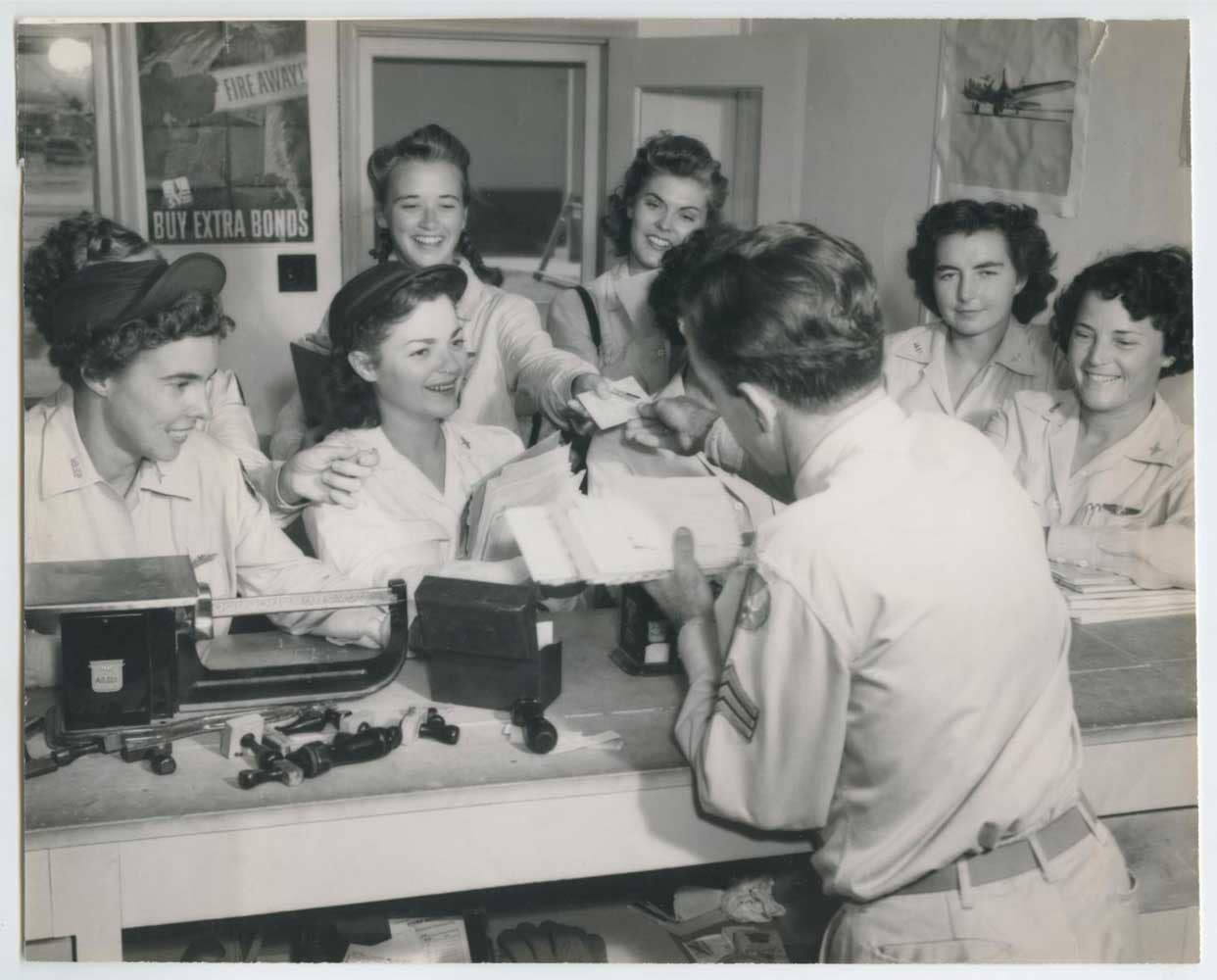As the WASP performed a great variety of duties outside of ferrying missions, many of the women in the WFTD Training Command were selected for classified, high-risk flight operations.
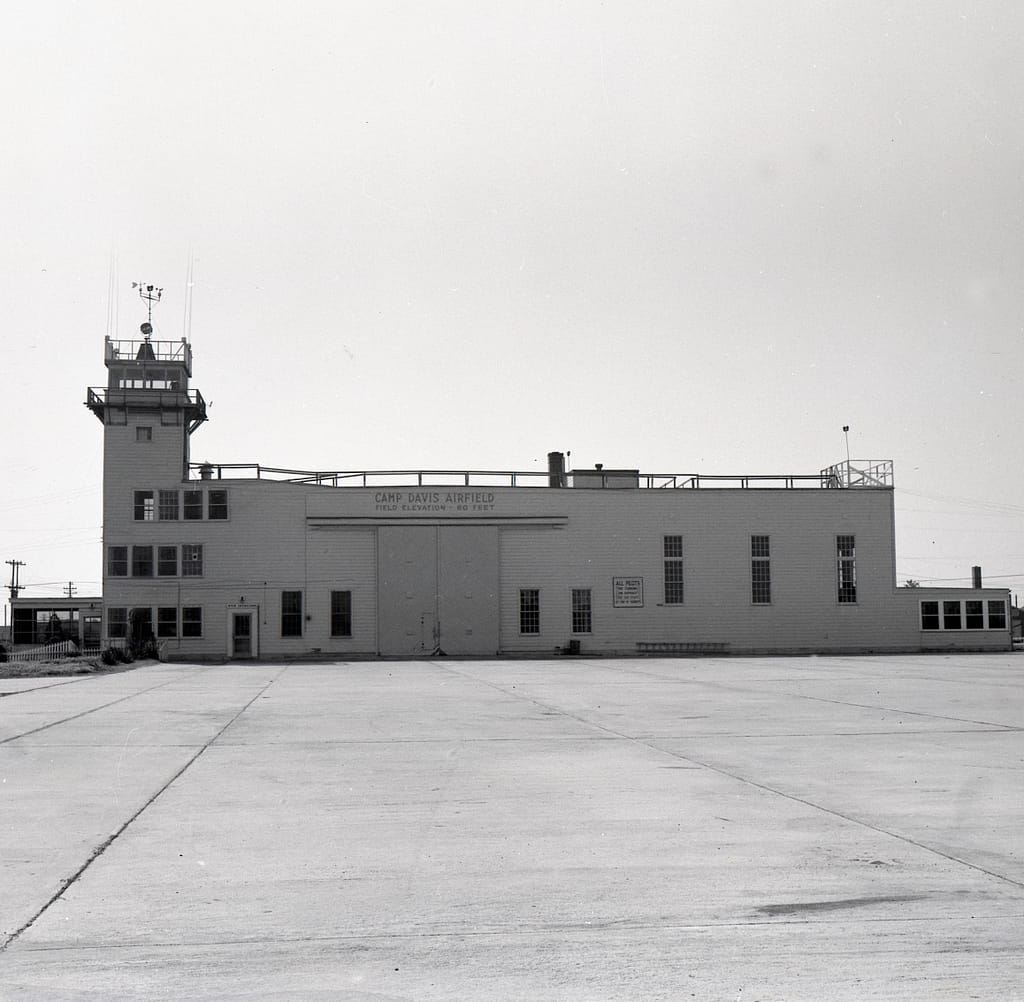
Photo: National WASP WWII Museum

Photo: National WASP WWII Museum
One of the program’s largest and primary domestic flying operations was to assist in the training of thousands of AAF recruits for ground-to-air and air-to-air anti-aircraft missions. For this, the WASP were first trained to fly A-24s (Douglas SBD Dauntless dive bombers) in order to tow targets for aerial anti-aircraft gunnery training. In addition, several WASP who trained to tow targets later learned radio controlled drone flying. The A-24s that the WASP trained to fly in were low priority, war-weary aircraft that were modified and equipped with a long fabric sleeve on a cable that was reeled out the aft of the airplane, far behind it, by an onboard crewman while the WASP flew target patterns above gunnery emplacements on the ground.
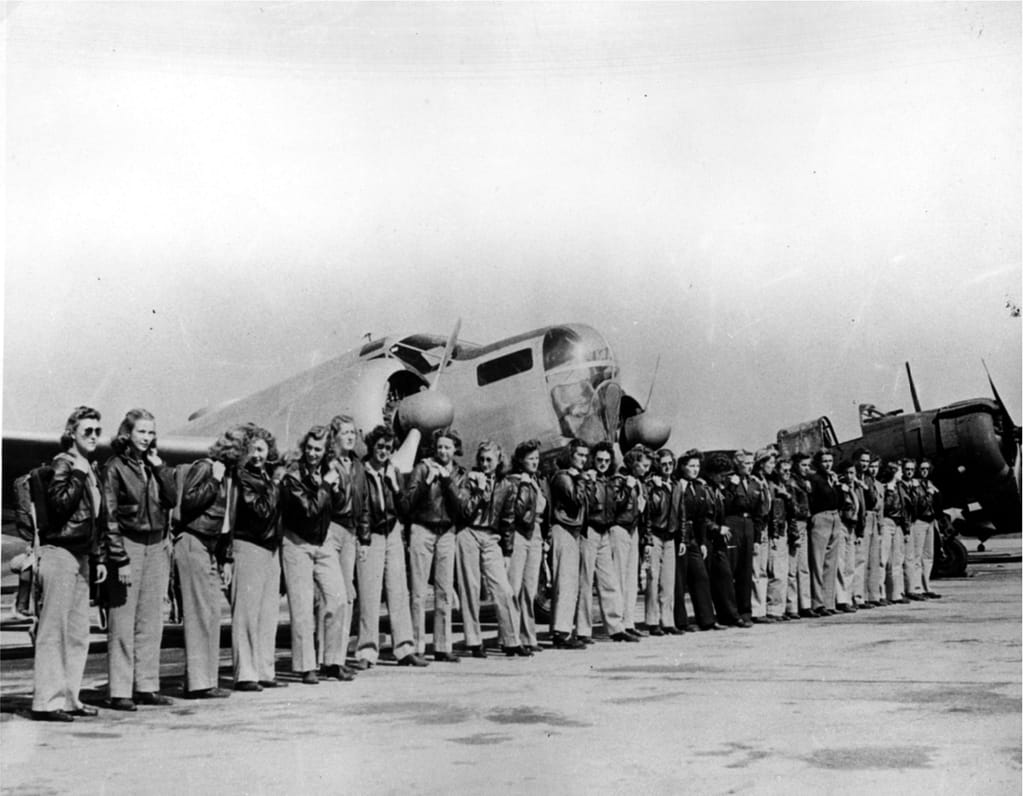
Photo: National WASP WWII Museum
The first group of WASP assigned to tow targets reported to Camp Davis, North Carolina, a U.S. Army field, that served as an important anti-aircraft artillery training school during World War II. The Camp Davis gunnery trainees’ primary objective was to learn how to accurately hit their targets, which would ultimately be in the European and Pacific Theaters of Operation and so this crucial training was a matter of survival, or their best chance of survival for those serving in the overseas combat arena.
At one of several gunnery ranges at Camp Davis, WASP piloted the airplane towing a fabric sleeve about 20 feet behind it, from one end of the beach to the other, as each gunner on the ground aimed and fired at the target, first with tracer bullets and then with live ammunition. The bullets were dipped in different colors so that when they passed through the target sleeve a small smear of the color would be left on the target. After flying several patterns, the WASP would descend low so as to release the sleeve to the ground where the gunnery squadrons could see how accurate their aim was. Needless to say, their aim was not always true. Missions were also flown at night, where the aircraft were tracked by searchlights.
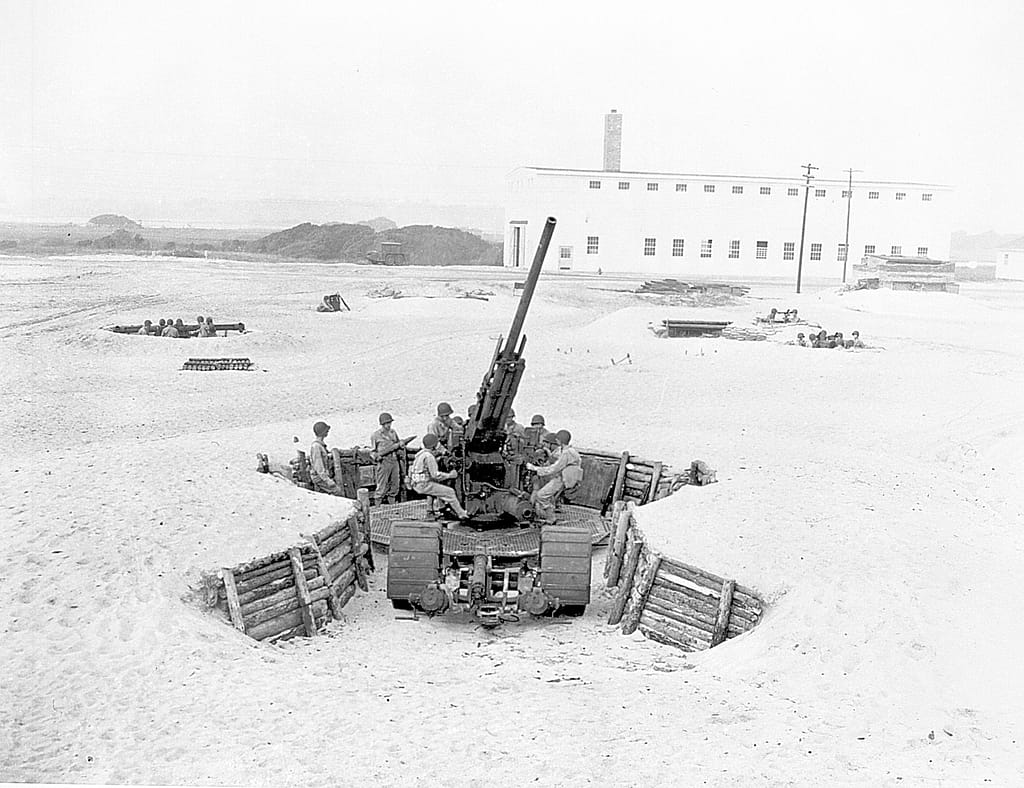
Photo: National WASP WWII Museum

Photo: National WASP WWII Museum
As previously mentioned the A-24s used for target towing were war-weary and not well maintained due to a shortage of parts and the use of lower 90-octane fuel, as opposed to the 100-octane fuel required to operate them. Tragically two WASP were killed at Camp Davis. On August 23, 1943, Mabel Rawlinson (43-3), who had received additional training in the A-24, died during night training after the airplane developed mechanical problems shortly after take-off. Returning to the field with her instructor, the landing gear hit the tops of the tall trees abounding the field and the plane crashed. One month later on September 23, Betty Taylor Wood (43-4), with the Camp Davis Chaplin on board as a passenger, died as a result of a crash- landing after the plane hit an embankment, stalled, and rolled into the ground upside down.
After several months of advanced training in target towing operations, WASP were assigned tow target duty and other types of duty at anti-aircraft artillery bases throughout the country, flying utility aircraft, dive and large bombers, pursuits and transport aircraft. A few of them, as listed in the book ‘On Final Approach’ (Granger, Byrd Howell, 1991) include Liberty Field in Hinesville Georgia where WASP received instruction and practice in piloting radio-controlled aircraft before being assigned to other bases such as Biggs Army Air Field, El Paso, TX.
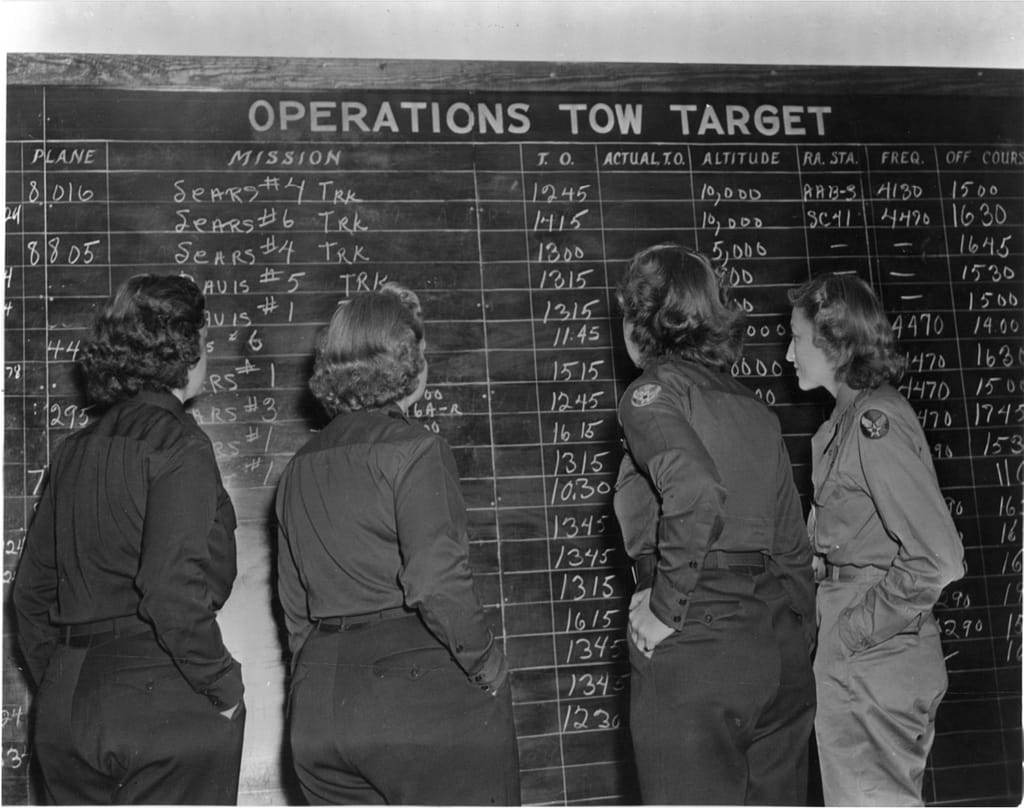
Photo: National WASP WWII Museum
At Biggs, WASP towed targets at high altitude (18,000 – 20,000’) and at low altitude (1500’ max) in the B-26 and B-34, and simulated strafing, diving to buzz troops and gunnery positions in the A-24 and P-47 aircraft. Searchlight missions were flown at night in AT-7s, AT-11s, and C-45s, without navigation or other lighting at 14,000’ –18,000’ to provide practice for searchlight crews. Tracking missions instructed anti-aircraft gunnery crews with moving targets flown in everything from liaison planes to the Dauntless and the P-47. Radar tracking provided training to radar operators to follow aircraft on radar, dropping aluminum chaff and flying through it to instruct operators to recognize aircraft obscured by the chaff. Radio controlled target flying entailed controlling PQ-8 and PQ-14 target drones from UC-78s or C-45s to provide live targets for anti-aircraft gunnery. For low altitude night missions up to a dozen unlit aircraft would drop flares on troops and gun emplacements, also laying smoke screens at low altitude.

Photo: National WASP WWII Museum
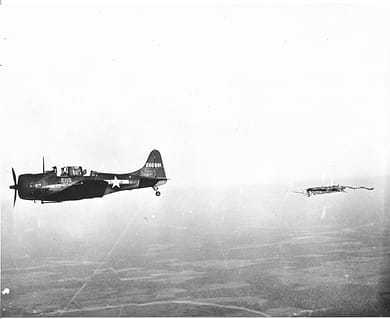
Photo: National WASP WWII Museum
The below list is index extracted from ‘On Final Approach’ [Granger, Bryd Howell, 1991 ISBN; 0-9626267-0-8] and refers only to tow target, radio-controlled, anti-aircraft gunnery operations at the following bases. Additional operations took place at several of the below.
Tow Target & Anti-Aircraft Artillery Training Bases that WASP were assigned to:
Aloe Army Air Field, Texas: WASP flew AT-6s. Towing targets & instrument instructors
Buckingham AAF, Florida: WASP flew B-17s as co-pilot, AT-6, BT-13s. Flying with onboard gunners firing at targets towed over the Gulf of Mexico
Deming AAF, New Mexico: A sub-base of Biggs. AT-6s, B-25, B-26, P-47
DODGE CITY AAB, Dodge City, KS: WASP flew B-26s as tow target pilots for air-to-air gunnery practice by novice gunners using live ammunition.
Eglin AAB, Florida: Fixed gunnery tow target pilots. PQ-8 radio control gunnery targets, A-20, B-25, P-39, P-47, B-29, UL-61, A-36
Harlingen, Texas: WASP flew B-26 as tow target pilots for flexible gunnery school.
Kingman AAB, Arizona: WASP flew B-26s for flexible gunnery school.
Laredo AAB, Texas: WASP flew B-26s as tow target pilots
Las Vegas AAF, Nevada: WASP flew B-17, B-26, P-39, AT-10, and AT-6 as utility, tow target, photographic shooting, range estimation
March AAB, California: WASP flew PQ-8 & PQ-14 radio controlled drone target; B-26, B-37 tow target pilots, A-25 ground artillery target; B-24 searchlight and tracking missions.
MOORE AAB, Texas: WASP flew AT-6, UC-78, C-45 as tow target pilots
Muroc Lake, California: Used as temporary duty (TDY) for WASP from Camp Davis to demonstrate radio-controlling PQ-8 carrying a bomb.
Otis AAB, Massachusetts: WASP flew PQ-8, PQ-14, and C-45 for radio controlled target drones.
Peterson AAB, Colorado: WASP flew at Fighter Interceptor School and as tow target pilots in the AT-23 and TB-26.
Pratt AAB, Kansas: WASP flew L-2 and L-5 tracking and search missions, B-26 in tow target
Salinas AAB, California: WASP flew B-25, PQ-14, BT-13, AT-11, AT-10 in radio controlled target flights
South Plains AAB, Texas: WASP flew B-25 &C-60 as trained pilots to tow CG-4A gliders at low altitude, mostly at night.
Tyndall AAB, Florida: WASP flew B-26 as tow target pilots for air-to-air live gunnery practice
YUMA AAF, Arizona: WASP flew B-26, AT-11, BT-13 as tow target pilots

Written by: Julia Lauria-Blum
Photos courtesy of: National WASP WWII Museum
About Julia Lauria-Blum:
Julia Lauria-Blum earned a degree in the Visual Arts at SUNY New Paltz. An early interest in women aviation pioneers led her to research the Women Airforce Service Pilots of WWII. In 2001 she curated the permanent WASP exhibit at the American Airpower Museum (AAM) in Farmingdale, NY, and later curated ‘Women Who Brought the War Home, Women War Correspondents, WWII’ at the AAM. She is the former curatorial assistant & collections registrar at the Cradle of Aviation Museum on Long Island and is currently editor-in-chief for Metropolitan Airport News.
Julia is the proud mother of two daughters and a rescued Boxer. Her many interests include swimming, painting, traveling, aviation history, cooking, and storytelling.


